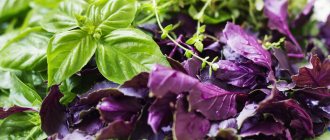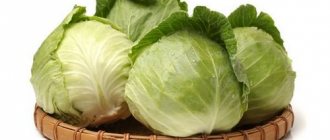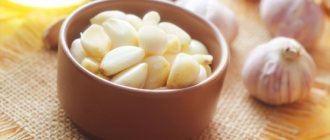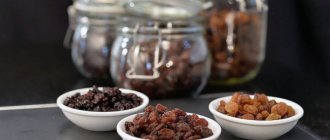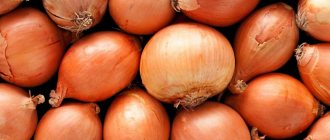When to harvest and how to store celery root?
Celery is one of the most ancient crops that humans eat.
The benefits of this product have long been known. The ancient Egyptians treated diseases with its help; they considered this root vegetable to be healing and giving strength, driving out evil spirits. This is a very useful and popular product, it is consumed all over the world. It grows almost everywhere, there are about 20 species. This root vegetable is rich in essential minerals and vitamins. In order for this vegetable to be on the table all winter, it must be properly collected and stored.
Beneficial features
The leaves, stems, roots and seeds of the plant can be eaten and used for medicinal purposes. Seeds help cure:
- arthritis and arthrosis;
- rheumatism;
- kidney diseases;
- gout;
- Parkinson's disease.
Eating leaves speeds up metabolic processes and stabilizes sugar levels. They are very rich in vitamins:
- calcium;
- carotene;
- phosphorus;
- ascorbic acid.
Leaves can be used to decorate any dish. Thanks to oils, food acquires a special taste and aroma. Celery is especially rich in magnesium, which is essential for the body.
With a lack of magnesium, the following occurs:
- anxiety;
- fatigue;
- irritability;
- night cramps;
- fear.
Symptoms of magnesium deficiency
Magnesium ensures normal functioning of the thyroid gland and heart. It helps avoid stomach ulcers, atherosclerosis and diabetes.
This vegetable is also indispensable for men's health. It contains natural androgen hormones. Prevents the development of prostate adenoma. Celery is no less useful for women. Consuming it will improve your complexion, help you lose weight, make your nails strong, and your hair soft and silky.
To relieve discomfort during menopause, you need to drink a tincture from the seeds of the plant. It will help get rid of pain, weakness and irritability. You can prepare the tincture as follows: 1/2 tsp. seeds, pour a glass of boiled water, leave for 8 hours. Take one tbsp. l. three times a day for a month.
You can eat stewed, boiled, fried root vegetables. It is especially useful in its raw form. All parts of the plant are suitable for cooking, but the root has the most valuable properties. Its delicate and soft consistency is not inferior to ginseng.
- essential oils;
- minerals;
- magnesium, potassium, manganese, iron, sodium salts;
- acetic and oxalic acid;
- plant hormones;
- vitamins B, C, PP;
- starch.
Celery root has a significant effect on blood clotting and is beneficial for bone strength. The magnesium salts it contains have a calming effect on the nervous system.
It is useful to use for diseases:
- heart and blood vessels;
- kidneys and liver;
- hypotension;
- allergies;
- irritability;
- to increase tone.
This useful product helps remove waste and toxins, improves metabolism, and also promotes weight loss. It protects the body well from viruses and infections, improves immunity, and protects against malignant tumors.
Features of harvesting and storage
When harvesting celery, mechanical damage to this crop must be avoided. A damaged root crop quickly rots. Harvesting must be done very carefully.
It is important to harvest root crops correctly. After digging, the foliage is cut off to the very root. Rotten and damaged fruits are discarded and cannot be stored. The plant needs to be dried well; for this, the crop is left in the fresh air.
The plant retains its beneficial properties well with proper selection of healthy fruits. You need to cut it before flowering, the aroma and its beneficial properties will be better preserved.
How should you store celery root? For short-term storage, the root vegetable is packaged in a plastic bag and put in the refrigerator. The packaging must be sealed.
For long-term storage, the root crop is placed in a box with river sand, positioned vertically. The box is placed in the cellar, the storage temperature should be from 0 to 10 degrees. Celery roots are packed in a bag or wooden box, also covered with sand and placed in a damp room with zero temperature.
Read also: How to get rid of rats in a private house? SES recommendations
For very long storage, you need to prepare a clay mass, generously lubricate each root with it, and place it in stacks in the cellar. This method will help preserve the product all winter.
Dried celery retains its properties well. The roots need to be washed, chopped, chopped in a blender or grated. Dry and store in a closed glass jar. The resulting crushed mass can be frozen. You can prepare dishes without defrosting the product. Storing celery root with the right approach will ensure the fresh appearance of the fruit and the preservation of its beneficial properties.
Petiole and leaf appearance
You need to select petioles for storage with bright green brittle stems. Soft elastic stems are a sign of lost freshness. The seed arrow also indicates a bitter taste.
Petiole celery is also stored in the refrigerator using plastic packaging. For long-term storage, you can use a plastic or wooden container; vegetables should be covered with sand. Place boxes in a dark place.
Green leaves are washed, dried and wrapped in foil. The petioles will remain in this form for 10 days. To prepare the seasoning, you need to spread the greens on a sheet of paper and dry them for a month. Store it later in a paper bag.
A very reliable way is to pickle the greens, add 100 g of salt to half a kilogram of the plant. Glass jars with herbs are sealed and stored for a year. You can dig up the bushes along with the soil and move them to the basement, bury them in the sand. This method will help preserve the greens until spring.
Proper harvesting and storage of celery root will help ensure that this healthy product is consumed throughout the year. It will help you eat right and get the vitamins your body needs.
Storing root vegetables in a city apartment
Celery is not capricious, it stores well until summer, but it still requires attention. The underground parts can be kept in the refrigerator. Since there are different products there, many of which are not cooked, unsanitary conditions are unacceptable. You need to thoroughly rinse and dry the root vegetables and pack them in plastic bags. Place the tubers in the vegetable compartment; they can be used fresh for salads and added to hot dishes.
We recommend: How to keep fruits fresh and aromatic at home?
Of course, there is only enough room in the refrigerator for a small amount of roots, and if you want to eat celery all winter, you need to use other storage methods. When the container for vegetables is very small, you have to bring small portions of root vegetables from the cellar. Before putting them in the refrigerator, cover each specimen with cling film; in this form, it remains fresh and juicy for up to 10 days.
If you have a large freezer in your home, do not load your entire crop into it. When celery tubers are stored at sub-zero temperatures, they are unsuitable for food in their raw form. Place only root vegetables in the freezer, which will become raw materials for soups and vegetable stews.
Sand and lime will help preserve celery and avoid the risk of root rotting
Root celery - when to harvest and how to store?
Celery roots mean a rather valuable product that is widely used not only in the culinary world. The plant of this type has gained recognition in the field of folk healing; with its help, even the most complex pathological phenomena are eliminated. However, it is impossible to obtain value if you do not first carry out collection manipulations. There are some subtleties that need to be taken into account. Let's look at them in order.
Cleaning Features
- If you seriously decide to stock up on crops, then choose the right time for such manipulations. This simple move will allow you to obtain roots enriched with a full list of chemical compounds.
- The main thing in everything is to be slow. There is no need to rush cleaning. If the rhizomes stay in the ground for a long time, this will be counted exclusively as a plus. In this case, the composition will be enriched, and the beneficial substances will enhance their positive effect on the body.
- Ripened roots have quite impressive dimensional characteristics. The root vegetable itself is compacted and even hard, the skin is structured and hard. If you adhere to the subtleties of cleaning, your product will last for a very long time. At the same time, it will not rot or deteriorate.
- Of course, everything is strictly individual. It is extremely important not to miscalculate in this matter. That is, allow the roots to ripen, but at the same time do not leave them longer than necessary. The only important thing is that it is forbidden to carry out operations during frosts, by which time the products will spoil in the ground.
Best time to harvest
Timely harvesting ensures that it will last a long time and will not lose its aroma and nutrients. When to harvest and how to store celery root? Let's figure it out in order.
We recommend reading: Leaf and petiole celery: how to preserve it for the whole winter at home
Do not rush to remove vegetables from the garden. The longer it stays in the ground, the better. This allows the root to acquire the following qualities:
- increase in size and mature;
- covered with a hard, elastic skin.
The question of when to harvest celery is a very important one. A mature root crop is ready for transportation and storage; it is not afraid of damage, spoilage, or rotting.
The timing of digging is individual and depends on the plant variety and the climatic conditions of the region. On the one hand, you need to wait until the root crop is completely ripe. On the other hand, cleaning during the first frost is unacceptable, because frozen specimens will quickly deteriorate.
Adult plants can withstand frosts down to -7 ⁰C. Lower temperatures may become critical
Do you know that…
Practitioners advise cutting off the shoots and lower leaves of celery about a month before the expected harvest, so that it can then ripen without them.
Sorting
- It is very important to check the quality of the received raw materials, otherwise a person risks sending low-quality products for long-term aging that will not bring value to the body. You only need to sort what smells good and tastes good.
- First, it is necessary to inspect the received copies. Their peel is compacted, uniform in pigmentation, and has no yellow inclusions or spots of unknown origin. There should also be no nodes present.
- In specimens suitable for reception, the upper section is compacted and is not loose or excessively soft. If such a fruit comes to you, get rid of it. Otherwise, it will rot and damage the remaining roots.
- It is quite easy to evaluate suitable specimens; you just need to carry out a few more tests. Feel the resulting product. It is of high quality if it is solid. In all other cases, the fruit will not work.
- The same goes for sounds. If you hear some voids when tapping, it means the roots are being thrown aside and not used. If the sound is dull, the inner section is not hollow, therefore the fruit is good.
- When the above manipulations are implemented, you need to get rid of the greenfinch. To do this, everything is removed, leaving only small processes about three centimeters in length. Next, an interesting variation of the bookmark is selected.
Read also: Varieties of remontant and large-fruited sweet raspberries for the Urals and Siberia
Fridge
- If the goal is to preserve all useful elements, then it definitely makes sense to take a closer look at this variation. In this form, the products can last up to six months.
- So, you need to eliminate all the soil to get clean specimens. Next, they are wrapped in polyethylene (it is acceptable to take bags) and sent to the vegetable drawer.
- If you don’t want to bother too much, it is recommended to use a fairly simple method of storing the plant in question. To do this, just remove the peel from the root and chop into strips. Alternatively, the raw material can be passed through a coarse grater or chopped into circles.
- Place the prepared raw materials in a ziplock bag and place in the freezer. Alternatively, use an airtight container if desired. If necessary, use the product in portions. It can be added to salads and hot dishes without heat treatment.
- Do not forget that the product in question can not only be frozen, but also dried. At the same time, raw materials can be stored at room temperature without any problems. The product can be presented in the form of straws or slices.
- To achieve the desired result, the root must be washed and dried. Cut off all excess, including the peel. Chop into thin slices. Place on parchment paper and leave in a dark and dry place. At the same time, there should be good ventilation in the room.
- Turn the workpiece systematically so that it does not start to rot. In addition, such simple actions will allow drying to proceed evenly. Once the product is completely dry, the structure will be quite brittle and brittle. Transfer the workpiece into linen bags.
- Store the product in a cool and dark place. Alternatively, raw materials can be prepared using a vegetable dryer. An oven is also suitable. The only problem will be that the vegetable will lose most of its beneficial qualities.
This type of plant is quite easy to harvest. The main thing is to remove and assemble it correctly. Otherwise, follow the simple instructions. Choose the most suitable type of raw material procurement for yourself. Prepare it properly in advance. In addition, you will always have access to a storehouse of vitamins and microelements.
How to dig up celery root correctly
To avoid damaging the root crops when digging, it is better to use a fork or a flat shovel.
Attention! Simple pulling out is suitable only in case of quick use of vegetables: with this method of harvesting, the root vegetables are severely damaged, which reduces their shelf life.
When digging vegetables, it is advisable to grab a large volume of soil around, then the root system will remain intact. To do this, they retreat 10–15 cm from the root crop, dig it up and, grasping the tops, carefully remove it from the ground with their hands.
After harvesting, the root crops are sorted and their quality is checked: they must be hard, without damage or rot, small healed cracks are acceptable.
Before being sent for storage, the crop is prepared:
- Clean or shake off the soil.
- Wash in water and leave in the sun for 1-2 hours to dry.
- The entire green part is cut off at a distance of 2 cm from the base and left on the bed as fertilizer. When cutting tops, it is important not to damage the growing point.
- To prevent the cut areas from drying out and starting to rot, the vegetables are laid out in a shaded, ventilated area.
- Store in the basement, refrigerator or freezer.
Root vegetables with slight mechanical damage are not suitable for long-term storage - it is better to use them immediately.
When to harvest and how to store celery root
Root celery is a useful cultivated plant that can be grown in your garden. The most important part of it is the root. To get the maximum beneficial properties of this product, it is necessary not only to properly care for the vegetable, but also to know when and how to harvest it.
Read also: Triactive, KS (100 120 40 g
The root here is the most valuable part, containing the maximum of useful substances. Therefore, in order for it to grow juicy, large and healthy, it is necessary to put a lot of effort into the process of growing it. However, harvesting the ripe crop will be no less important for this vegetable crop. Improper harvesting can significantly reduce the value of celery root.
In autumn, the root of the vegetable increases its mass and also gains all its basic beneficial properties. In addition, this plant is frost-resistant. However, it is still not worth exposing it to frost, as this will affect the shelf life.
When to Harvest Celery Roots
If you rely on at least the approximate collection dates, then experts advise choosing October. Usually cleaning occurs at the end of the month. In this case, the vegetable can safely grow in the beds until the first frost. There are no clear deadlines; to determine when this crop can be harvested, you need to focus on both weather conditions and the visual manifestations of the plant in the autumn.
This crop should be harvested very carefully. The integrity of the tuber must be maintained.
Wintering celery in the cellar, garage, or country house
There are many ways to store fresh celery tubers. Choose any of them, but remember: a good result is obtained only when the room temperature is from 0° to +1°, and the humidity is 90% or higher. Our great-grandmothers also knew how to organize the wintering of root crops in non-residential buildings, and these methods have hardly changed. Take advantage of the wisdom of old advice.
- Pour a layer of wet sand into a large box and “plant” celery there, like in a garden bed.
- Dip the root vegetables in a “mash” of clay and water, dry and store in stacks.
- In the southern regions, where the ground does not freeze to great depths, place the tubers in trenches, sprinkling each layer with wet sand. Cover the vegetables with straw and a 15 cm layer of soil on top.
Advice
For fresh consumption, select only the largest, smoothest, healthiest specimens. Ruthlessly discard those root vegetables that cause even the slightest suspicion. They will not go to waste if you immediately put them into processing and store them frozen or dried.
Use some other little tricks to better preserve your harvest. When chalk and lime are added to the sand where root crops are stored, or the rows of celery are sprinkled with onion peels, the crop does not rot. Make sure that the sand does not dry out; to do this, you can cover the pile with film, but do not make airtight packaging. It would be a good idea to put the vegetables in plastic bags or boxes lined with film. This material retains carbon dioxide, which contributes to the good preservation of tubers. In any case, the top of the container must be open or have ventilation holes.
We recommend: Simple and effective ways to peel oranges: with your hands, a spoon, a knife
